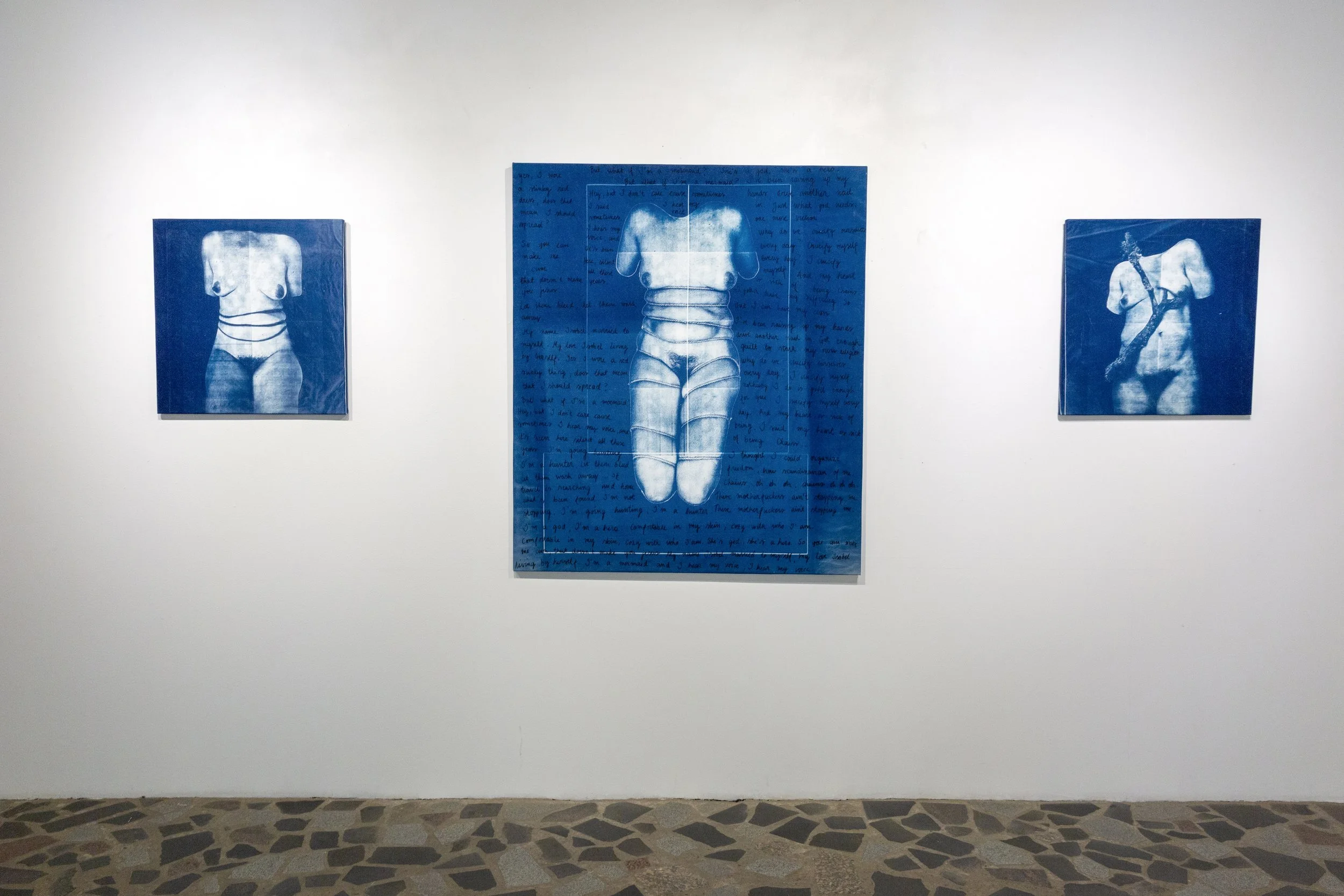
ANNA Cyanotypes
ANNA (2025) exhibition at Varikko Gallery presents series of works, consisting of cyanotype prints on fabric and installations. At the core of the works is the female body—without a face or limbs—manipulated into various positions using bindings. The bodies are arranged in forceful postures that emphasize skin folds and compression marks. The exhibition also features charred wooden elements, copper pipes, and stones, complementing the overall composition.
Cyanotype (blueprint) is a historical photographic technique in which a light-sensitive solution of potassium ferricyanide and ammonium ferric citrate reacts to sunlight or UV light. After exposure, the image is revealed in a water, acquiring its characteristic deep blue hue. The method was developed by Sir John Herschel (1842), but it was Anna Atkins (1799–1871) who brought it into the realm of artistic and scientific research, refining the technique to its full potential. Her work Photographs of British Algae: Cyanotype Impressions (1843–1853) was the first photographic book and a significant advancement in photographic documentation.
Atkins' research involved collecting, pressing, and flattening plants between paper and glass—a process mirrored in the exhibition’s themes of bodily control and manipulation throughout history. The exhibition title, ANNA, refers both to Anna Atkins’ legacy and to the imperative meaning of the word in Finnish, which translates to “give.” It symbolizes cultural and social double standards and the demands placed on the female body.
ANNA explores representations of femininity and power dynamics through history, medicine, art, and popular culture. In the cyanotype process, light and water make the female body visible—just as the body has historically been subjected to constant scrutiny and definition. Atkins documented plants by forcing them into a fixed form—ANNA does the same to the female body, drawing a parallel between the fate of women and nature, both of which have been objects of control and the male gaze.
The bodies bound by belts and ropes evoke corsets, bindings, and cultural pressures that have shaped the female form both literally and metaphorically. The exhibition serves as a metaphor for how historical structures of power and cultural imagery have not disappeared—they continue to resurface, like images in water.
ANNA -exhibition view Varikko Gallery
Three Graces part I, (Norma, Marilyn, Rose Loomis)
Three Graces part I, (Norma, Marilyn, Rose Loomis)
Three Graces part I, (Norma, Marilyn, Rose Loomis)
Mirdja, Tamara, Naima
Tamara
ANNA -exhibition view Varikko Gallery
Spider
Antigone
Persona II (Elisabeth Volger)
Bianca
Three Graces Part II (Kassandra, Andromákhē, Poluxénē)
Three Graces Part II (Kassandra, Andromákhē, Poluxénē)
Three Graces Part II (Kassandra, Andromákhē, Poluxénē)
Three Graces Part II (Kassandra, Andromákhē, Poluxénē)
Three Graces Part II (Kassandra, Andromákhē, Poluxénē)















